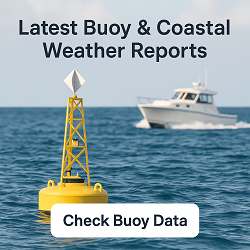Nora, IL Weather Forecast and Current Conditions (61059)
Current Conditions From Nearby Local Station

Feels Like 45°F
at
Current Conditions From Nearby Local Station

Feels Like 45°F
at
Point Forecast at a Glance







7-Day Temperature Trend
Week Ahead Summary
Sharp cooling trend with high temperatures dropping from 67°F to 61°F, falling as low as 52°F. Mostly dry conditions with only one day showing rain chances.
Climate Context
This week's forecast shows temperatures running 4°F below the historical average for October. Normal highs for this period are around 62°F with lows around 39°F.
This Date in Weather History
1844 - The famous "Lower Great Lakes Storm" occurred. Southwesterly winds were at hurricane force for five hours, driving lake waters into downtown Buffalo NY. The storm drowned 200 persons.
More on this and other weather history
Nora 7 Day Weather Forecast Details
Sunday Oct 19

Night: Clear, with a low around 38. Southwest wind around 5 mph.
Monday Oct 20

Day: Sunny. High near 67, with temperatures falling to around 64 in the afternoon. South wind 5 to 20 mph, with gusts as high as 35 mph.

Night: A chance of rain showers between 7pm and 1am. Partly cloudy, with a low around 43. Southwest wind 10 to 15 mph, with gusts as high as 25 mph. Chance of precipitation is 40%.
Tuesday Oct 21

Day: A chance of rain showers after 7am. Partly sunny, with a high near 52. West wind 15 to 20 mph, with gusts as high as 35 mph. Chance of precipitation is 30%.

Night: A chance of rain showers before 7pm. Mostly cloudy, with a low around 40. Chance of precipitation is 30%.
Wednesday Oct 22

Day: Mostly sunny, with a high near 53.

Night: Widespread frost after midnight. Mostly clear, with a low around 32.
Thursday Oct 23

Day: Widespread frost before 9am. Sunny, with a high near 56.

Night: Mostly clear, with a low around 31.
Friday Oct 24

Day: Mostly sunny, with a high near 57.

Night: Partly cloudy, with a low around 36.
Saturday Oct 25

Day: Mostly sunny, with a high near 58.

Night: A slight chance of rain showers between 7pm and 1am. Partly cloudy, with a low around 39.
Sunday Oct 26

Day: Partly sunny, with a high near 61.
Sun & Moon Monthly
Sunrise 7:18 AM
Sunset 6:12 PM
Last Light 6:41 PM
Moonset 5:16 PM

Contiguous United States Extremes
Sun's High Temperature
101 at 2 Miles North Northeast Of La Puerta, TX
Sun's Low Temperature
17 at Daniel, WY
Weather Folklore
Water rising in springs and wells indicates rain.
Current subscribers - login to your ClearSky account
About Nora, Illinois
Nora is a village in Jo Daviess County, Illinois, United States. In 2020, the population was 107, down from 121 according to the 2010 census, which was up from 118 in 2000.
Content from Wikipedia, licensed under CC BY-SA 3.0.
How We Provide Better Local Weather
Current conditions: We use the nearest available station to your location - including professional MESONET/MADIS and local weather stations - often miles closer than regional airports.
Forecasts: National Weather Service point forecasts predict for your specific area, not broad regional zones, making them far more relevant to your location.

